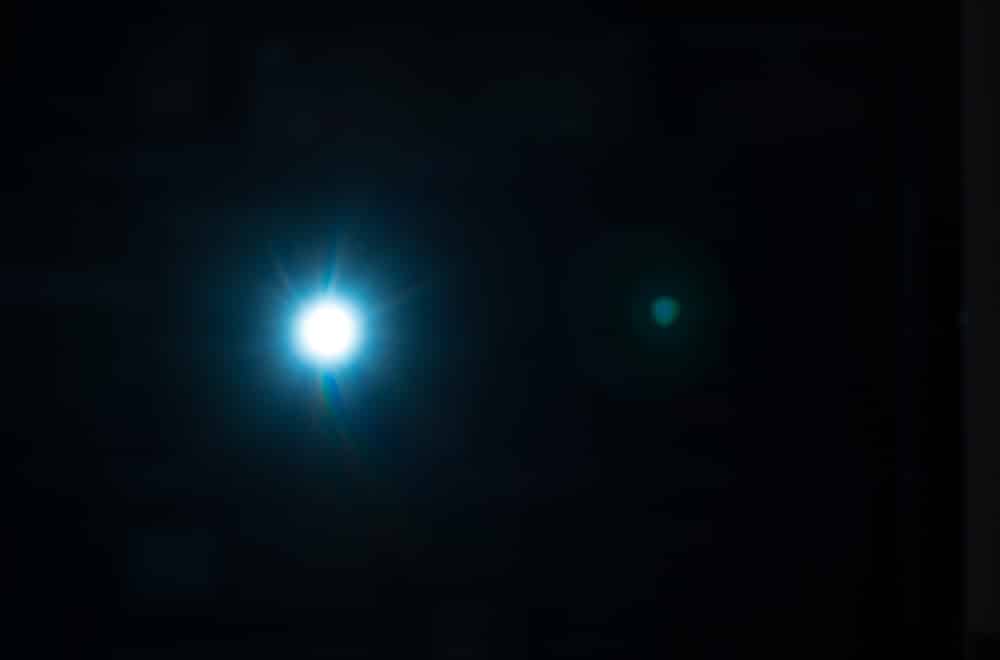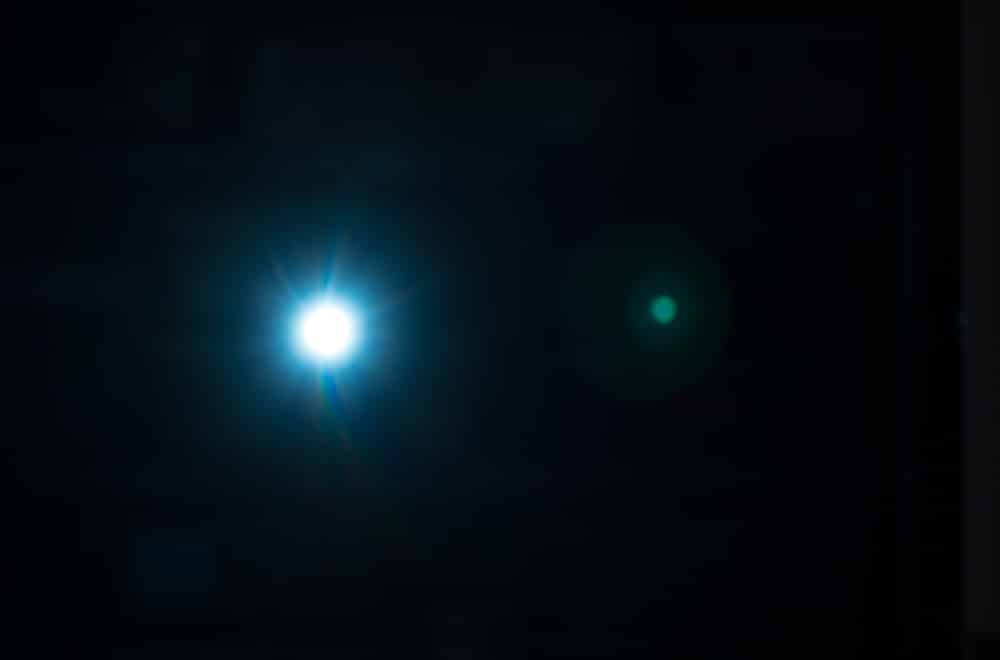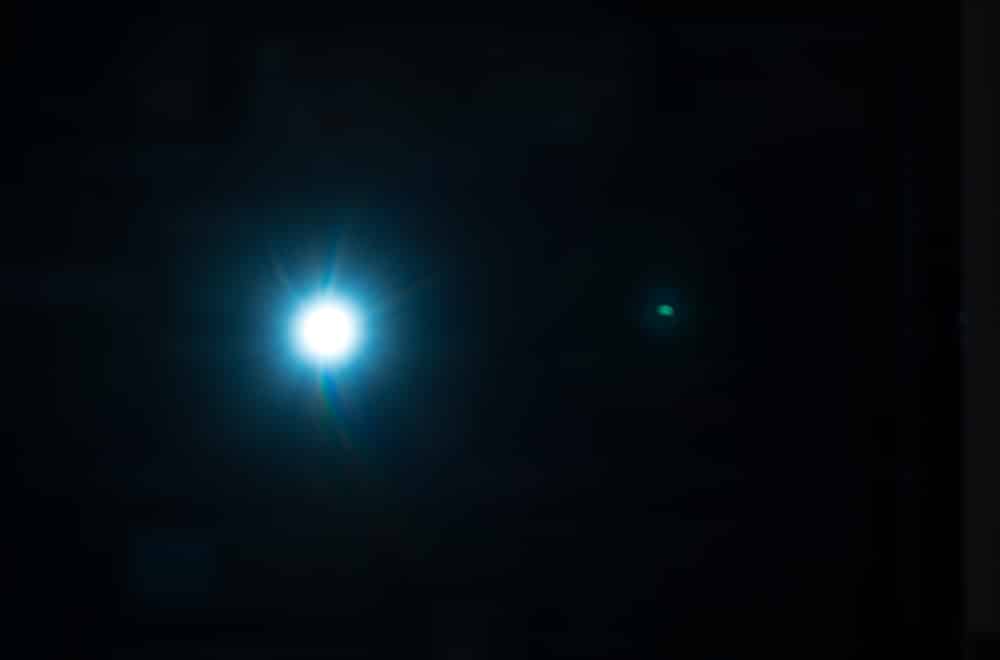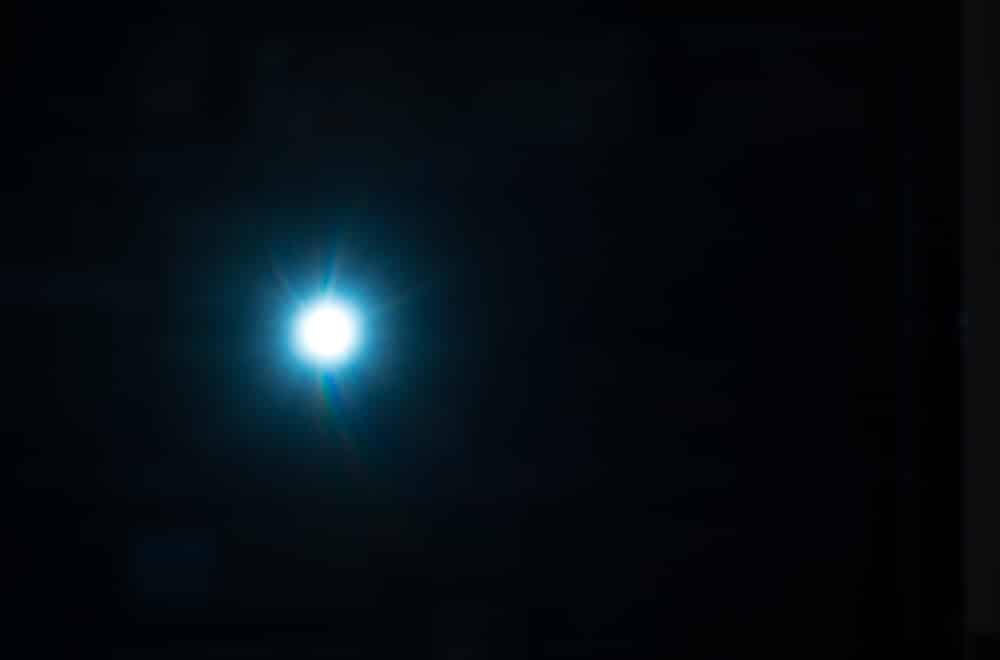A few days ago, I posted a flare comparison of a Zeiss Otus 55 mm f/1.4 lens on a Sony a7RII with and without a 3-stop Hoya ND filter.
Questions arose about the filter I used.
Michael Demeyer said:
I would also expect the quality of the filter to matter. For example, the Zeiss filters, expensive as they are, use the same T* A/R coatings as the lens. So it seems they would be no worse than one more lens element. No?
Several people expressed a distaste for Hoya filters.
I bought 3 77 mm UV filters:
- Zeiss T* UV — $115
- Hoya Digital HMC UV(C) — $23
- B+W XS-Pro Digital UV-Haze MRC nano — $36
All prices are from Amazon US.
I set up the camera aiming at a LED flashlight a bit off-axis. The reflections from the filter that I saw were on the opposite side of the lens axis. I cropped the images to the central 9th of the image in area (central third in both height and width).




I have three conclusions:
- We can say that adding the filter is not the same as adding one more lens element. The Otus has a flock of lens elements and no reflection like all of the filter images.
- The Hoya and Zeiss reflections are about the same size, but the Hoya one is stronger. Looks like the T* costing is buying something.
- The B+W reflection is smaller in extent than the other two, but the brightest. I think the B+W reflection would be the easiest to deal with in postproduction.
I am not planning on running out and buying a bunch of T* filters.
The previous post stated: “Since the filter’s main contribution to flare seems to results from reflections from lens elements, I would expect that different lenses would yield different results.”
Could the reflections in the above images instead be caused by reflection off the sensor, rather than lens elements?
In any case, the filters obviously cause the results we see above. Unlike any of the elements in the Otus, the filter introduces a perfectly flat surface into the light path, which reflects the reflected light back to the sensor.
Interesting question. I don’t know the answer.
The index of silicon is ~4, so fresnel reflections are very strong off of it. Surfaces parallel to the image surface are usually avoided in lens design because of a propensity for causing nasty flares upon interaction with the sensor.
Thanks Brandon, that was my understanding about modern lens designs for digital sensor applications.
My hunch is it’s light reflected off the sensor reflecting back off the filter.
What about the index of microlenses+CFA?
The distance from the filter to the lens element may be / will be of some consequence, a thin filter should perform differently to one that has thick threads separating it from the front element.
Good point, and probably the reason for the B+W reflection size being different from the other two. BTW, I’ve done some tests on what happens to the reflection when the lens is focused at various distances. I’ll post them soon.